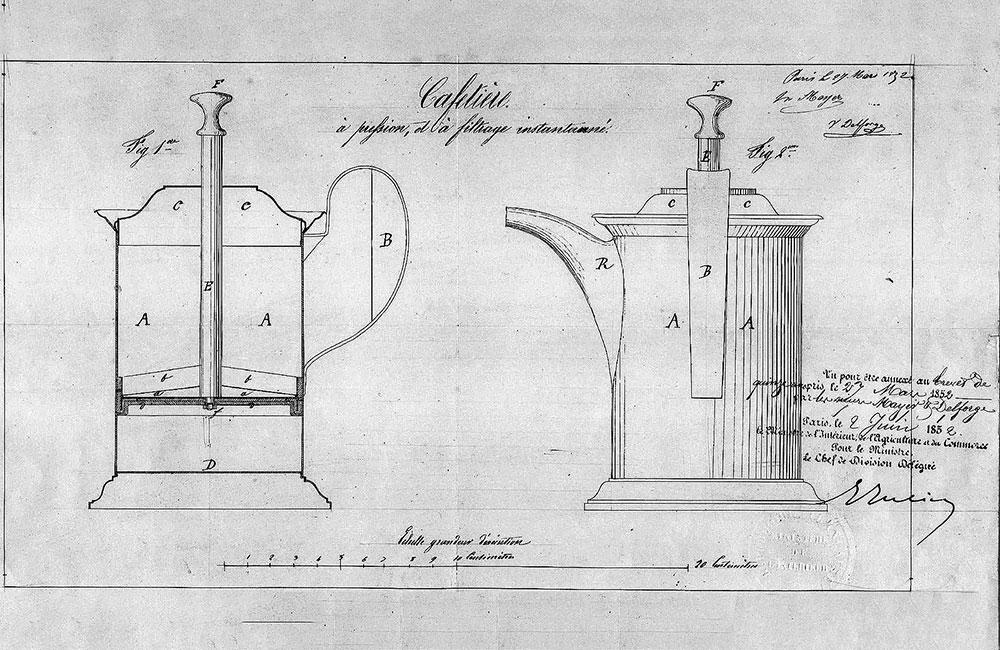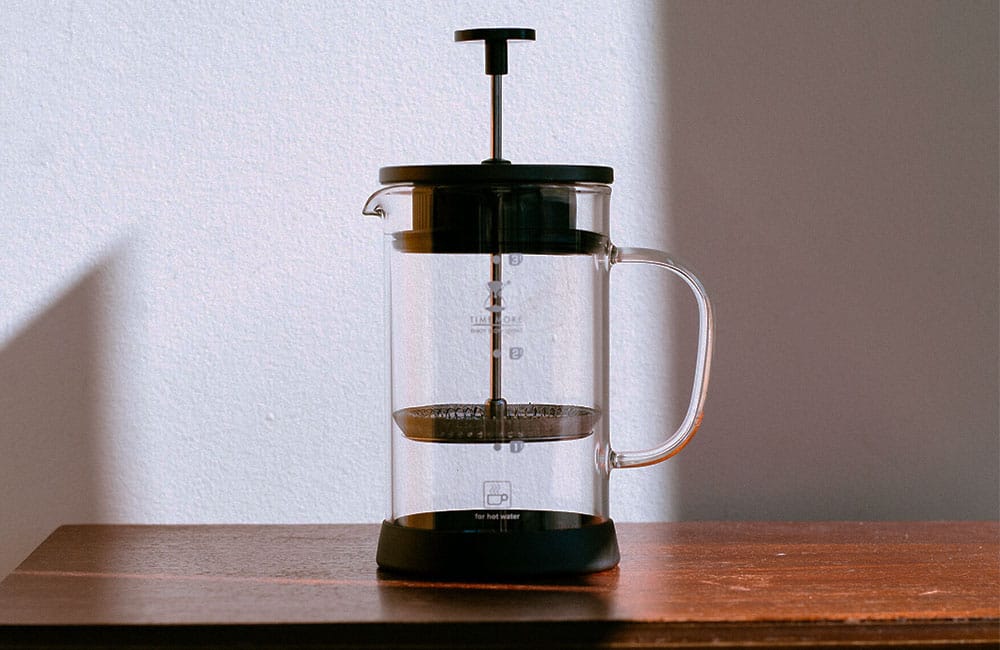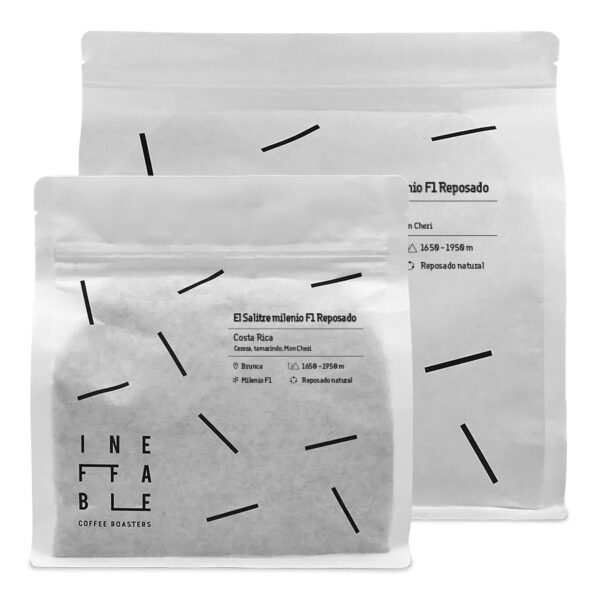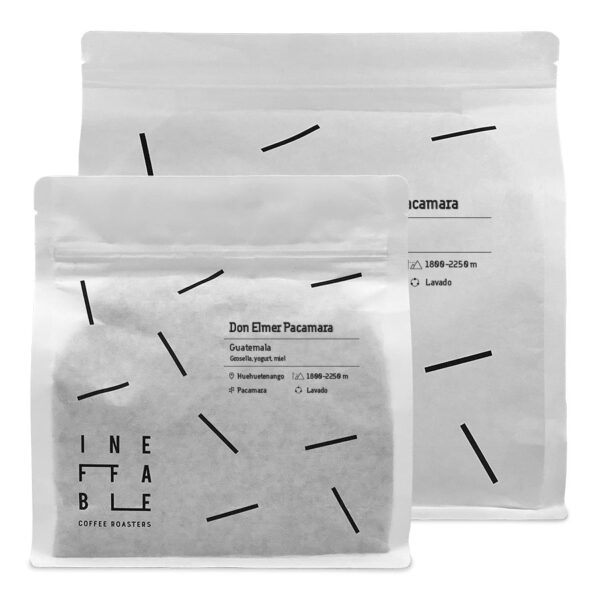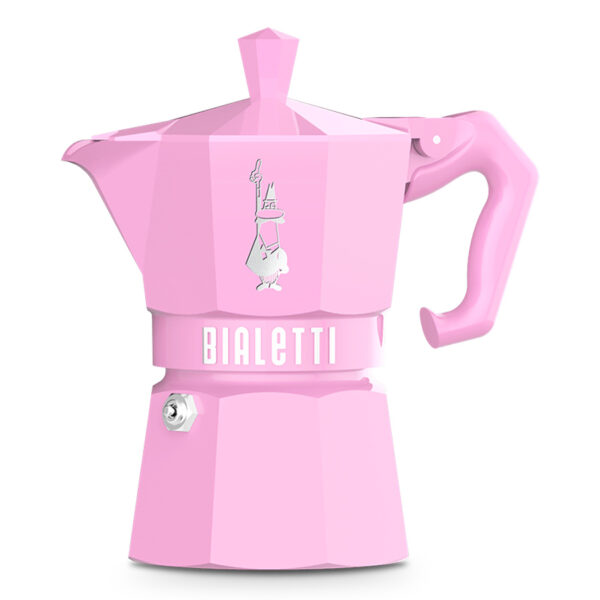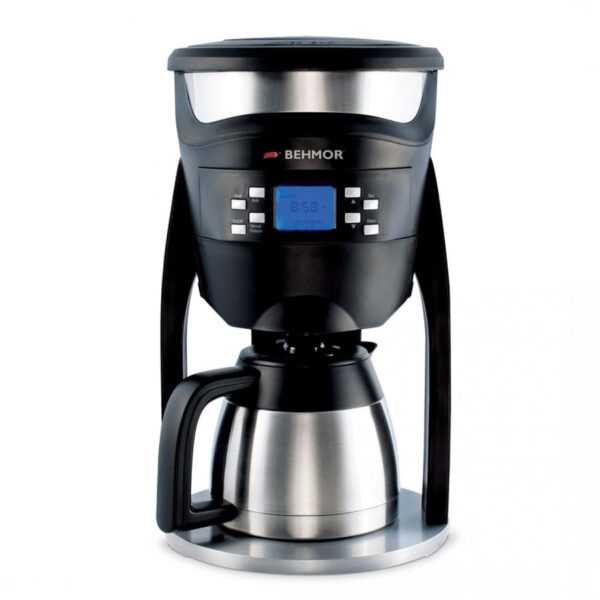During one of those hot summer afternoons in Seville, where even the sunflowers seek shade, some friends decided to go find shelter.
We made all the necessary arrangement to spend the weekend away: anti-mosquito spray and specialty coffee beans with all the paraphernalia – worthy of good geeks – to brew it.
Or so we thought. We also brought a tent, food, and other things, but none of that was really essential. We found a hidden spot in the mountains next to a river. It was paradise.
The temperature during the day did not exceed 28 or 30 degrees, which, compared to the 42 degrees of Seville, made us reconsider our existential choices.
But, going the point, we woke up the next morning, after having even felt cold at night, and we set out to do the most important task on a camping Sunday morning: make coffee.
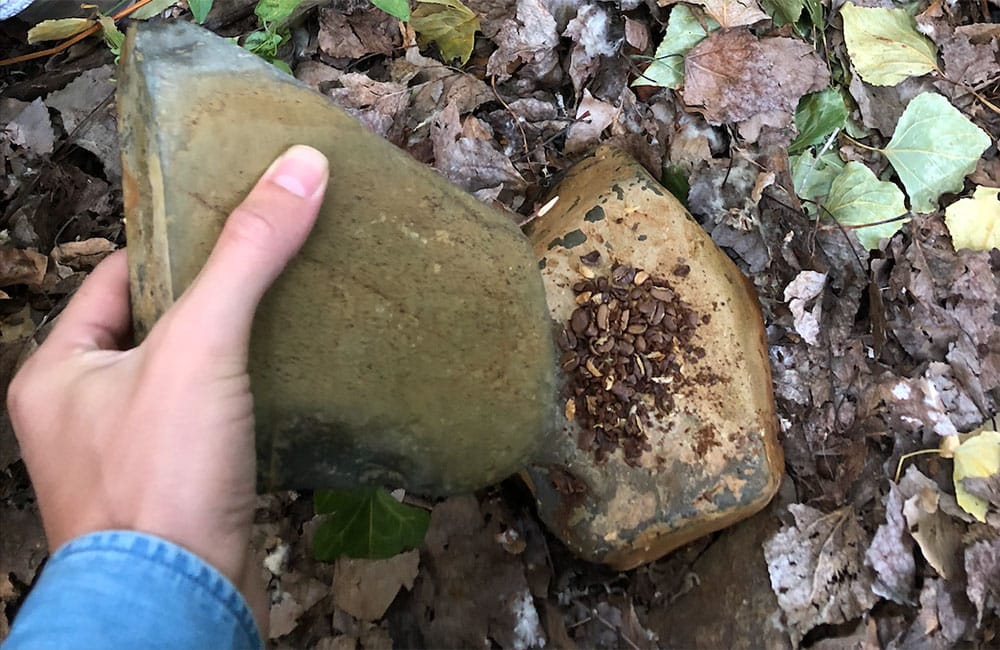
Grinding coffee with two stones for having forgotten the grinder
But not just any coffee. We brought with us our AeroPress, camping gas, fresh coffee beans and… hell, not a grinder. We forgot it at home, 250 km away.
The nearest town was about half an hour away and the mere mention of specialty coffee would reveal us as what we were: city dweller in the countryside.
Regressing to a previous evolutionary state, probably due to the lack of caffeine, we decided to try grinding the coffee beans with two stones that we found in the river (so that they would be flat and clean).
And, with a lot of patience and little thinking, we managed to grind the coffee.
Legend has it that this is how the French Press coffee maker was invented. A French individual forgot his coffee pot while he was traveling.
So he decided to pour the ground coffee directly into the water and then he looked for a filter that would allow him to push the coffee to the bottom of the pot with a long, cylindrical instrument.
A metal one. Et voilà, he had invented the French Press coffee maker, a very original name. Luckily, it is also known as a plunger coffee maker or cafetière.
And what’s the “official” story of the French Press?
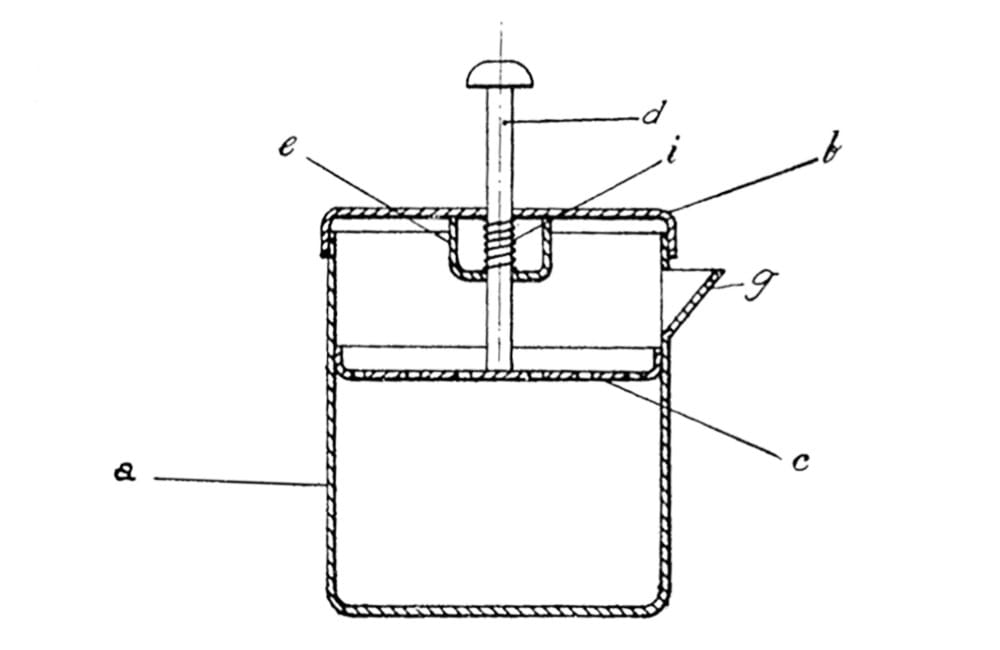
French press design Attilio Calimani and Giulio Moneta
As is often the case, the “official story” is much more boring than the one you have just heard, and not for that reason any truer. The difference is that, for the official history we have a patent registry that indicates a date: 1852.
We do not know if it was the same individual of French origin in our little story, or some fellow countrymen, who registered for the first time the patent of a rudimentary French press coffee maker.
Their names were Mayer and Delforge and we’d like to believe that one of them was the same individual; that would give us hopes that we can patent a new coffee grinding method: the Spanish rock grinder.
But the French design had some gaps, mainly, that the coffee device didn’t have a sealing effect inside the container, so the coffee would mix again with the water, although in lesser quantity.
Some Italians decided that they could do a better job (of course!) and registered a new patent in 1929.
To complete the joke, a Swiss, Faliero Bondanini (who by that name could be the clever cousin of the Italians) designed and patented the plunger coffee maker that we know and use today.
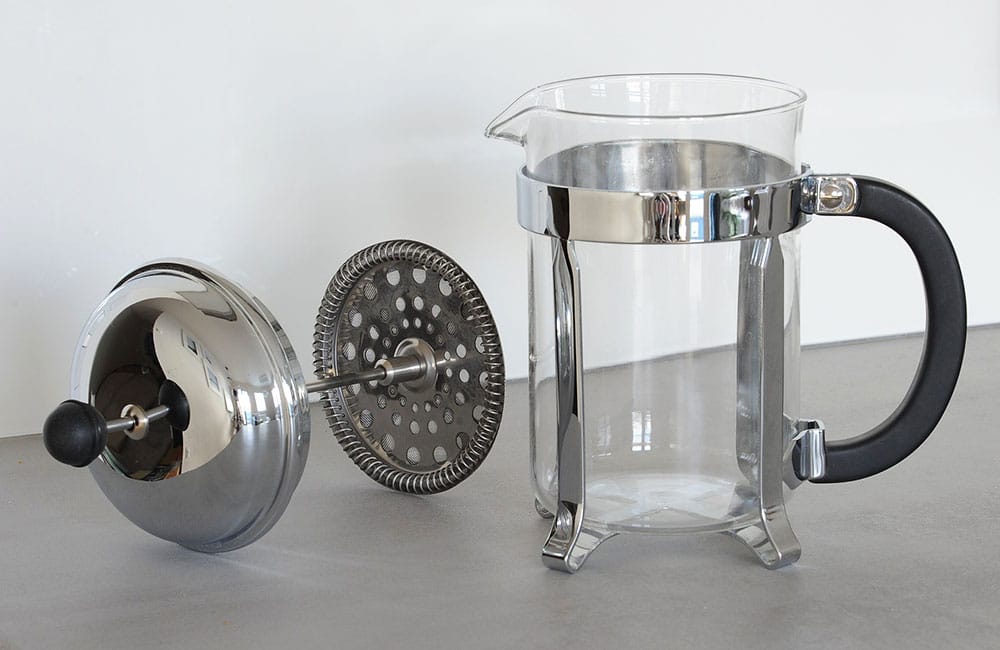
French press coffee maker that we use today
The Swiss man, honouring his birthplace, managed to successfully manufacture, market and sell this method under the name “Chambord”.
It became so successful in France that that’s the reason why we know it today as a French Press coffee maker; not because it honoured the misadventures of our fellow coffee maker.
In any case, Bodum, a Danish company, ended up buying the patent and factory for these plunger coffee makers and, in many places, this brand has been associated with this method of preparing coffee which is, essentially, a filter/immersion method.
The French Press is an example of the true spirit of European cooperation. And the Spaniards, since we didn’t want to be left out of the party, gave it our own name: the piston coffee maker.
How does a French Press coffee maker work?

Preparation of a french coffee maker at Ineffable Coffee
If our short history class aroused your curiosity about this method of preparing coffee, you may be wondering what great engineering enterprise requires three different patents and an (almost) entire continent to develop it.
The answer to how a coffee plunger works is very simple and we suspect that was not the reason for so many patents, but Europeans are very altruist and like to help each other.
A French Press is a full immersion brewing method. No, it does not mean that you fully immerse yourself in coffee (although sometimes it would not be a bad idea …) but from start all the coffee is in contact with water.
It consists of two main parts: a cylindrical container and a steel (or other material) round filter system that fits perfectly into this cylinder and is attached to a metal stick that helps inserting and removing the filter.
The general idea is very simple. You pour the ground coffee into the cylindrical container, then pour hot water, stir, let it rest for a few minutes and finally push all the coffee particles to the bottom with the filter.
The result is a coffee infusion with a lot of body and texture and a bit oily. If you prefer a cleanest brew, with very little coffee residuals, such as a V60, this method may not be for you. But you should first try it and decide later.
The Best French Press
Timemore brand french coffee maker, available in the Ineffable store.
It’s hard to make a coffee plunger badly, but possible. If the filter does not fit well into the container or if its holes are very wide, the coffee particles will not be pushed to the bottom or retained in it and the result will be a very gritty coffee.
It is normal for this type of filter coffee to be a bit more cloudy than other methods (such as an AeroPress or V60) and with a lot of body, but it should not be too much.
It is also important that the filter is removable to be able to clean it correctly after each use and that it uses quality materials to ensure greater durability.
Some coffee plungers have a glass container and others have a steel one. We recommend the glass ones since they are transparent, which will facilitate the brewing and, why not, will make it more visually attractive.
You can take a look at some of the French Press’ that we have in our store.
How to use a French Press?
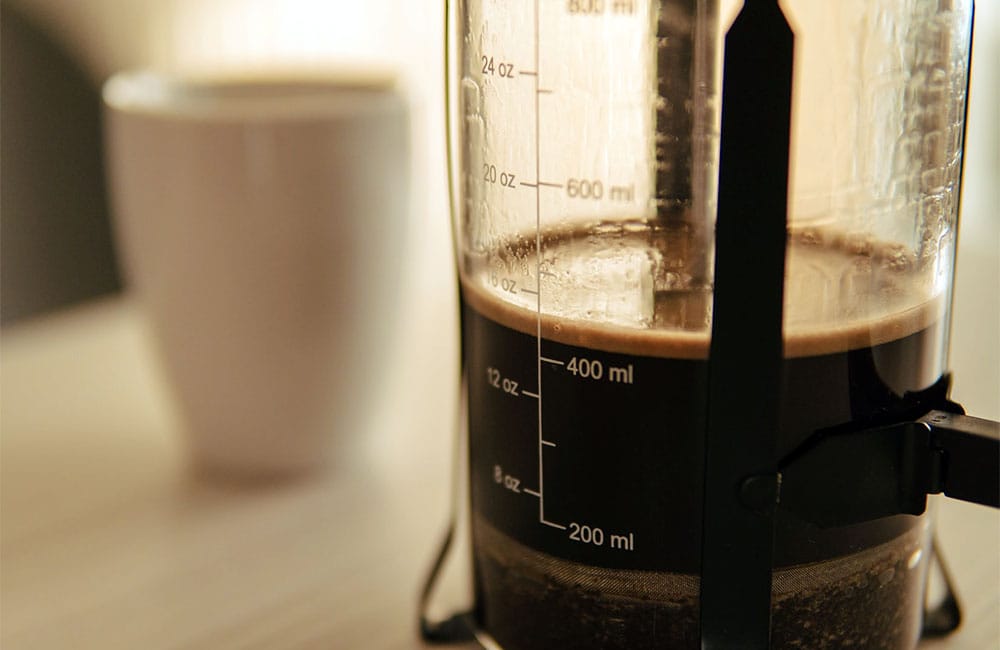
The french press maker coffee brewer is a total immersion method
We have seen above that the basics of how to make coffee in a French Press is very simple, and this is one of its great advantages.
Being a relatively easy method, we can achieve good result consistently. It does not mean that there aren’t certain things that we should take into account.
As with all brewing methods there are variables that we must control. In this case the most important are the coffee/water ratio, the thickness of the grind, the water temperature and the brewing time.
If you follow the following recipe and take these variables into account, you will get an excellent cup of coffee.
How to make coffee in a French Press?
To prepare the recipe you will need: a French Press (or coffee plunger, is the same thing), a grinder, a scale, a stopwatch, a stirrer and a kettle. And, obviously, coffee. We recommend that you use single origin coffees with a roast for filter methods like this or this (shop link).
You should measure 12 grams of coffee for every 200 grams/ml of water. The coffee should have a medium grind and we recommend using filtered water at 94 degrees. A water with a dry residue between 125 and 175 mg/liter would be ideal.
Recipe for a French Press
- Preheat the French Press and discard this water.
- Grind the coffee to a medium thickness.
- Put the plunger on the scale, add the coffee, tare the scale and start the stopwatch.
- Pour 200gr of water, stir gently a couple of times and put the lid on.
- Let it rest for a total of 4 minutes.
- Push the filter slowly.
- Once the filter is pushed to the bottom, you can let it rest for another 2-4 minutes so that it gains more complex flavours, although it is not necessary. After the first 4 minutes it should be ready to drink it.
- Filter & EspressoCold BrewSpecial process
Edwin Noreña Red – Colombia – Mossto 72h Co-fermented
36,00€ – 132,00€ VAT included - Filter & Espresso
El Salitre Milenio F1 – Costa Rica – Reposado natural
27,00€ – 99,00€ VAT included - Filter & Espresso
Don Elmer Pacamara – Guatemala – Washed
25,00€ – 89,00€ VAT included
Immersion vs Filter
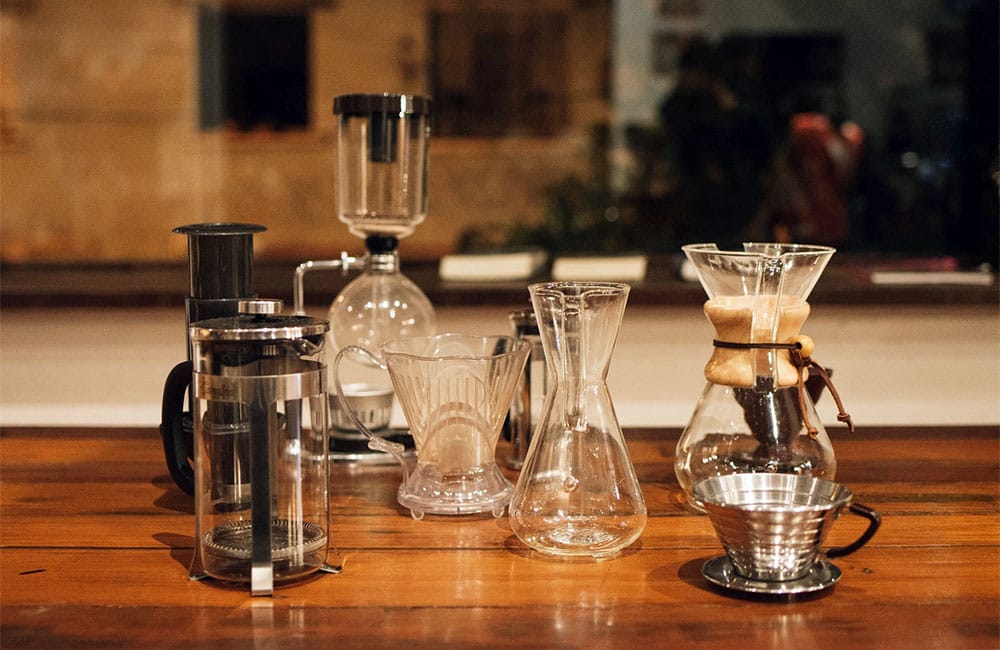
French Press brewer and other immersion and filter methods
As we have said, the French Press or plunger coffee maker is an immersion method.
This means that coffee comes into full contact with the water from start and it becomes an infusion. Other methods of immersion are cupping, the AeroPress or the Clever.
In other filter methods, such as a HARIO V60, Chemex or Kalita Wave, the idea is different. Instead of the coffee being in contact with the water all the time and becoming infused, the coffee is put in a filter, usually made of paper, over a container and then hot water is poured, which filters through the coffee and falls into the container.
Both methods have their pros and cons. It will depend on the coffee that we want to brew and our personal preferences to use one or the other.
The following table lists some of the general characteristics of each method:
| Immersion | Filter |
| Extraction by infusion | Extraction by filtration |
| Variable: infusion time | Variable: water pouring technique |
| Easier to get consistent results | More difficult to get consistent results |
| Full-bodied coffee | Tasting notes complexity |
| A thicker, more intense sensation | More delicate and acidic notes |
These are some characteristics of the immersion methods, mainly the French Press, compared to other filter methods.
It should be noted that, immersion methods that also use paper filters and pressure (such as the AeroPress), might have different characteristics.
Get to know our accessories and visit our shop
You should give a try to the French Press
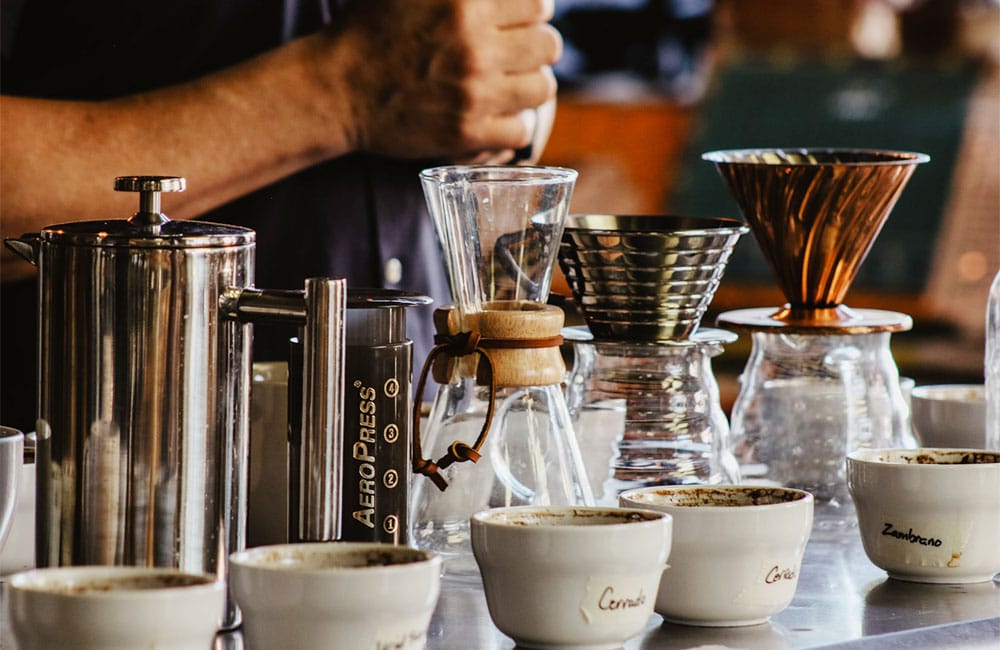
Tasting with different preparation methods
Given the simplicity of the method and the many experimentation possibilities that it offer us by playing with the different variables, the French Press coffee makers are a great option to get started in specialty coffee.
That is not to say that for the experienced coffee enthusiast or the specialty coffee professional, it is not a valid method, far from it. When brewed correctly it offers excellent results that will not disappoint the most demanding palates.
Ultimately, the method we use to brew our coffee should depend in the kind of coffee that we have available and our personal preferences and capabilities.
Having all this in mind, we can say that a French Press is a safe investment that you will keep in your coffee arsenal and use for years to come.
Don’t you want to give it a try?

